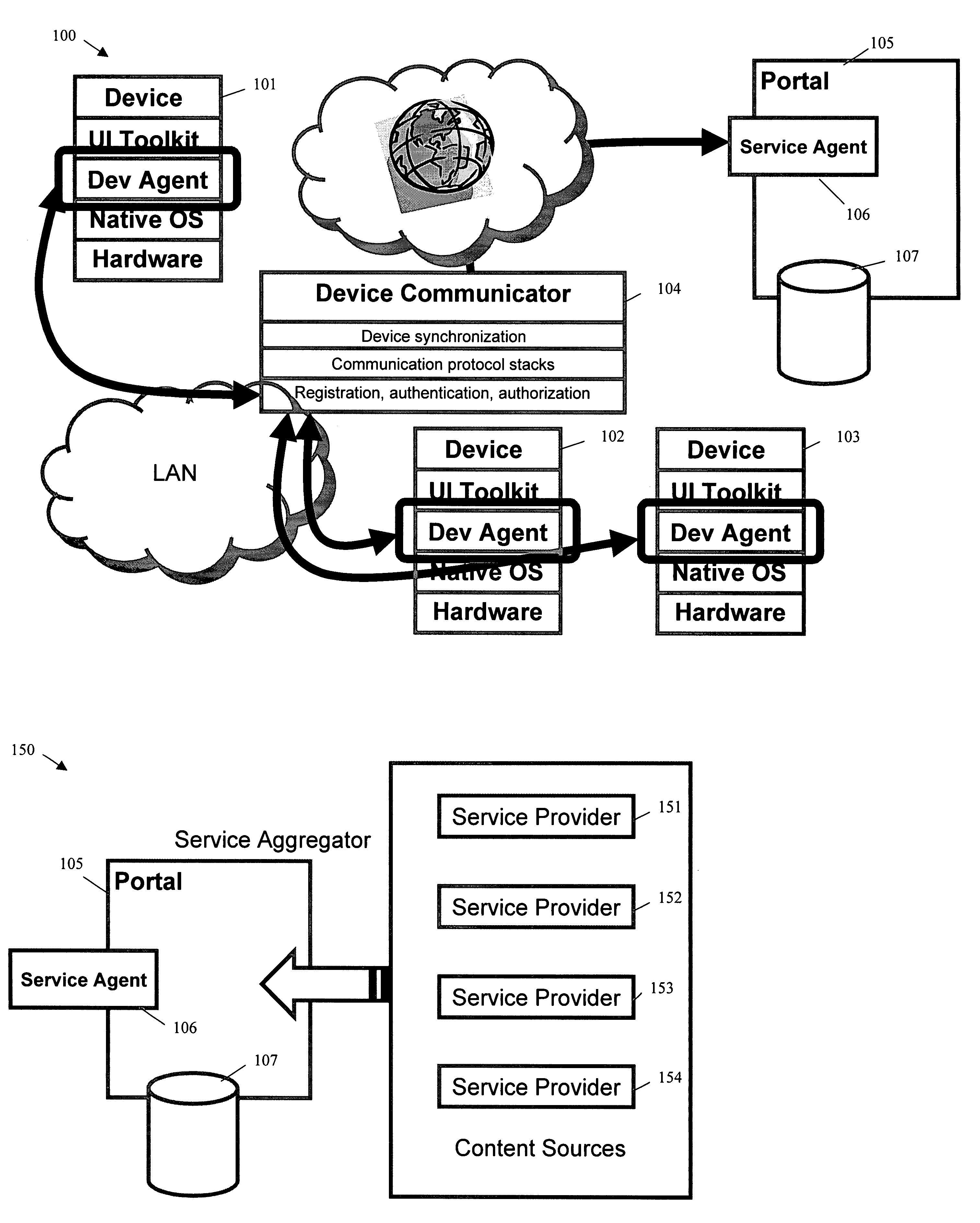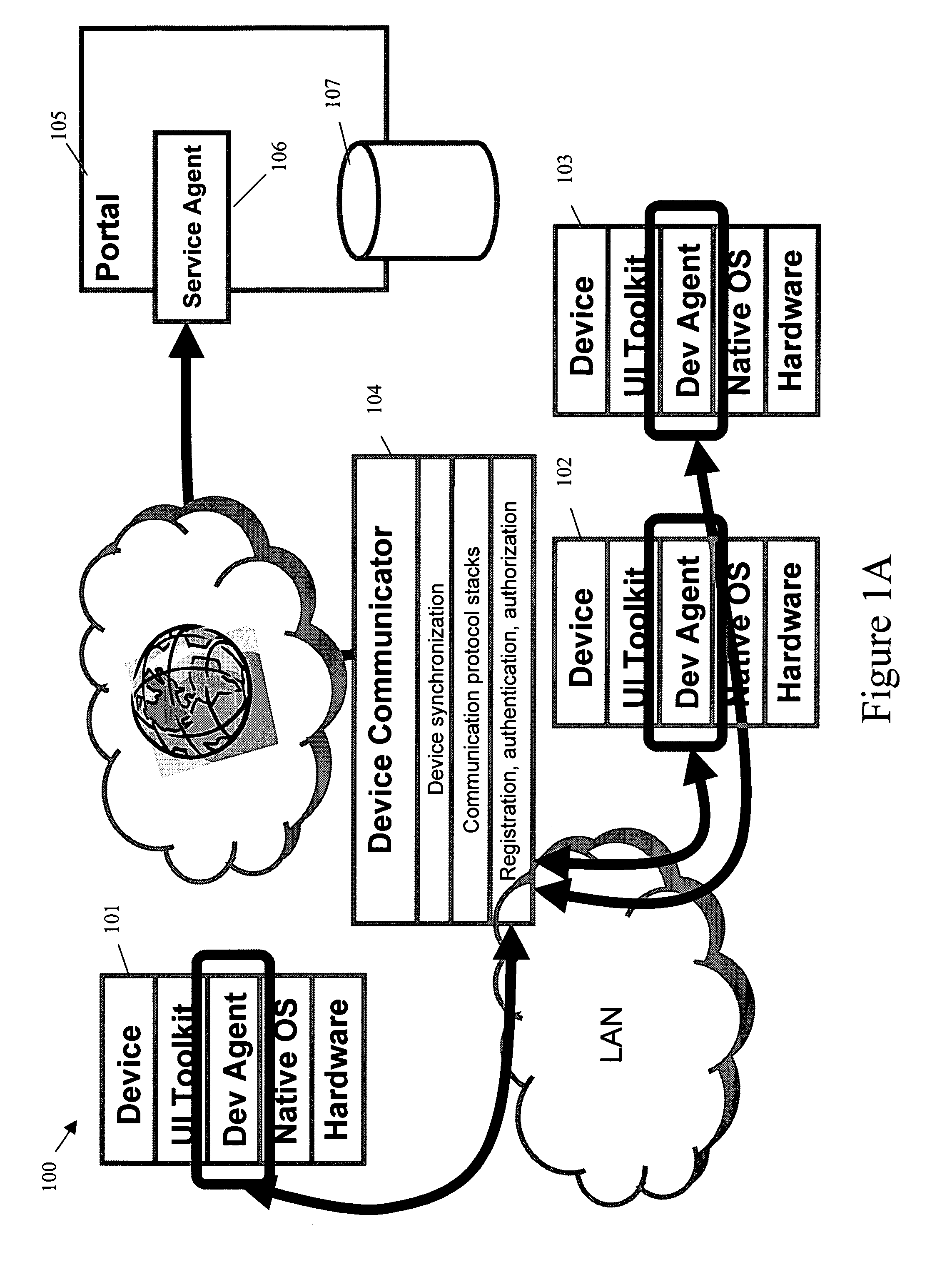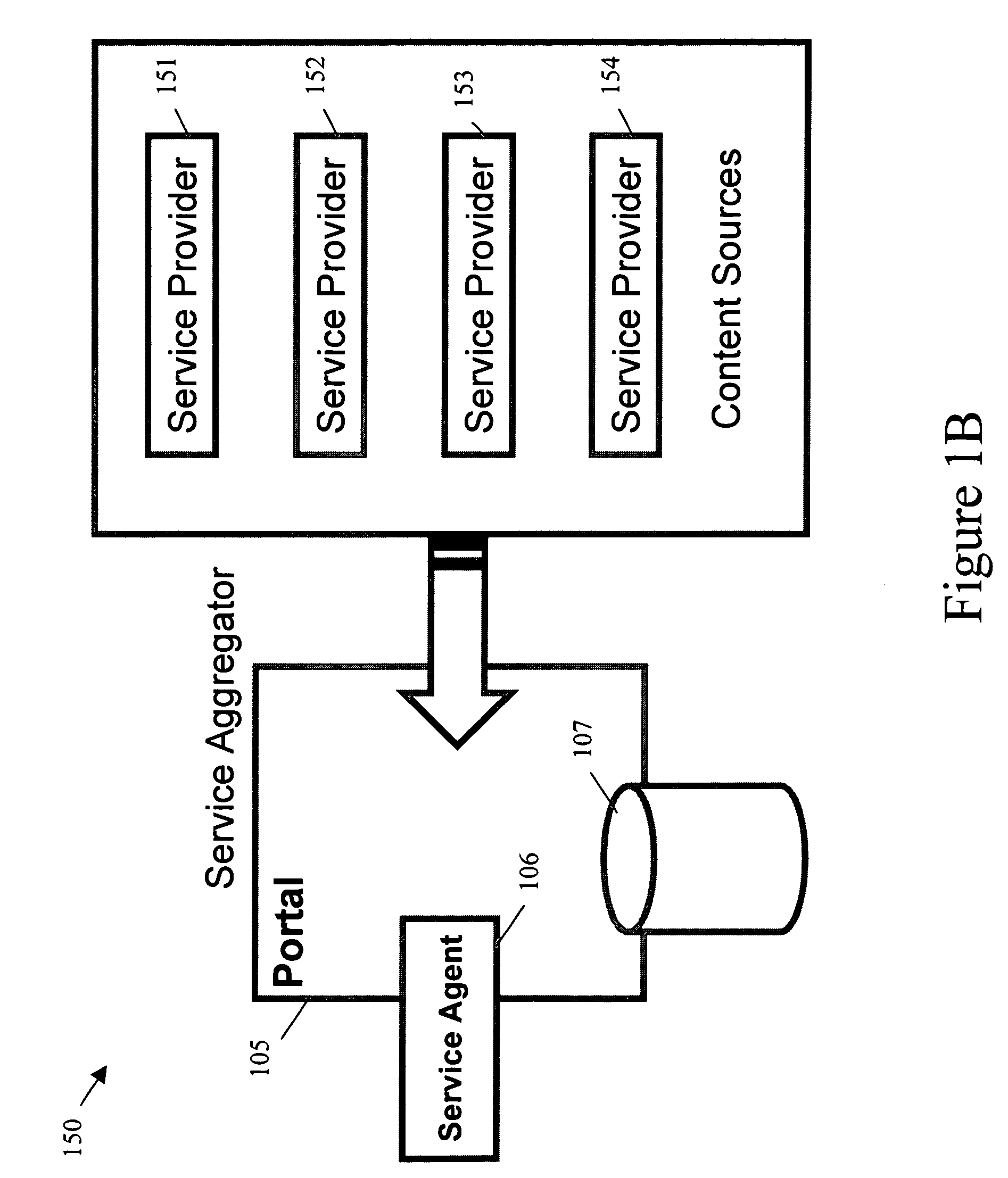Apparatus, method and system for providing automated services to heterogenous devices across multiple platforms
a heterogeneous device and automated technology, applied in the field of automated services provided to heterogeneous devices across multiple platforms, can solve the problems of affecting the ability to move to new standards, affecting the ability to communicate directly with each other, and affecting the ability to achieve the effect of achieving and affecting the ability to achieve the effect of new standards
- Summary
- Abstract
- Description
- Claims
- Application Information
AI Technical Summary
Benefits of technology
Problems solved by technology
Method used
Image
Examples
Embodiment Construction
[0056]FIG. 1A shows an exemplary system architecture 100 for Automated Services Across multiple Platforms (ASAP), which includes three devices 101, 102, and 103, a device communicator 104, a portal server 105, a service agent 106, and a database 107.
[0057]The devices 101, 102, and 103 include a layer of device-specific software, the so-called device agent, which supports a common language (such as, for example, the Extension Markup Language (XML)) to interface with the device communicator 104. The device communicator 104 acts as a gateway or moderator to coordinate the devices 101, 102, and 103 in a local network neighborhood. The device communicator 104 supports multiple communication protocols and connectivity standards so that it may talk to other devices in one language (e.g., XML) but using different protocols and / or connectivity standards (such as, for example, Hypertext Transfer Protocol (HTTP), File Transfer Protocol (FTP), Simple Network Management Protocol (SNMP), Internet...
PUM
 Login to View More
Login to View More Abstract
Description
Claims
Application Information
 Login to View More
Login to View More - R&D
- Intellectual Property
- Life Sciences
- Materials
- Tech Scout
- Unparalleled Data Quality
- Higher Quality Content
- 60% Fewer Hallucinations
Browse by: Latest US Patents, China's latest patents, Technical Efficacy Thesaurus, Application Domain, Technology Topic, Popular Technical Reports.
© 2025 PatSnap. All rights reserved.Legal|Privacy policy|Modern Slavery Act Transparency Statement|Sitemap|About US| Contact US: help@patsnap.com



